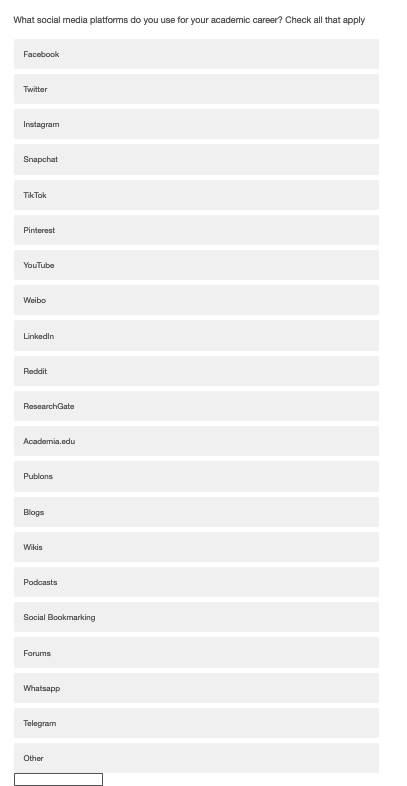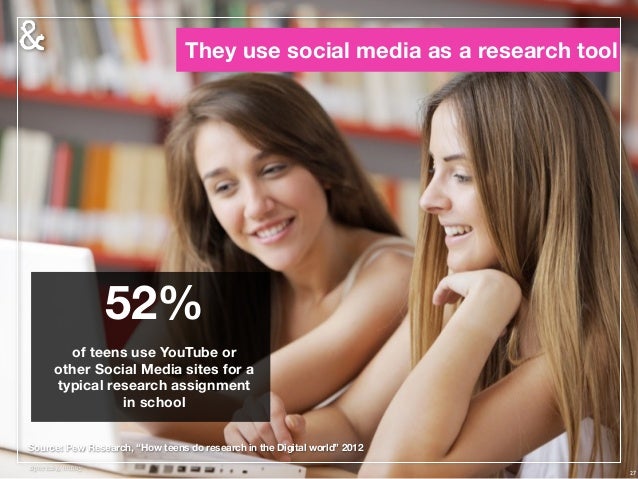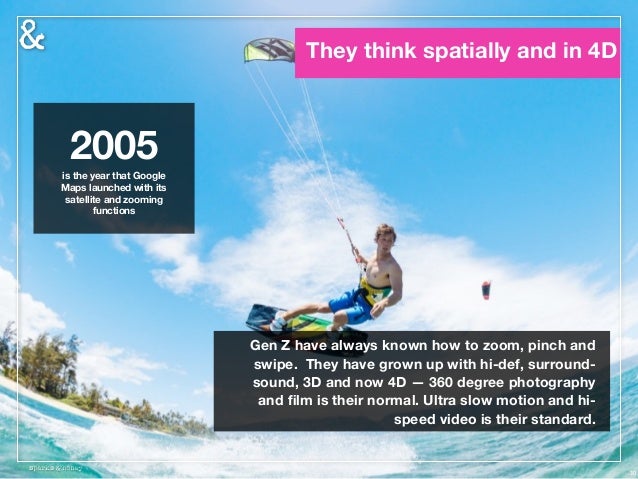Searching for "social media branding"
How Monopoly Man Won The Internet
http://www.npr.org/2017/10/06/555979792/how-monopoly-man-won-the-internet
http://time.com/money/4969855/monopoly-man-equifax-hearing/
http://nypost.com/2017/10/04/monopoly-man-crashes-ex-equifax-ceos-senate-hearing/
http://www.breitbart.com/big-government/2017/10/04/monopoly-man-photobombs-equifax-ceo-senate-hearing/
My note: Branding in social media times is a very specific act. Ingenuity is the keyword; even when repeating someone else. Copying someone else is copying someone’s brand and not contributing to your own.
+++++++++++++++
more on social media branding in this IMS blog
https://blog.stcloudstate.edu/ims?s=social+media+branding
Using social media for academic support and branding (survey)
https://utampa.az1.qualtrics.com/jfe/form/SV_7OIcioC82PQDbw2?fbclid=IwAR1CcWLdXsgXIoez0yaC-nhdgiVBo2dlwn4unzc-wYwfFxocg_nywMt4_pA

link to article
Branding messages do three things: 1) create awareness, 2) try to convince consumers that a product or service is a solution to their problem, and 3) create a feeling of familiarity and relationship with the consumer, commonly known as “brand affinity.” That’s why most SMB TV commercials show the owner, staff, and premises onscreen or are narrated by the owner. Twenty years ago, advertising provided the same kind of social edge that good social media reviews do today. A typical broadcast media pitch to an advertiser would suggest that commercial messaging was subliminally greeted by consumers as if it was a referral from friends. (My first job was selling radio time, and frankly this pitch was well-enough accepted to justify repetitive spot buys.)
Instead of commercials, develop a content marketing strategy that reinforces the brand message without being pushy. Get customers and allies to define their brands for and with them via social media, and supplement call to action media buys with online loyalty and deals programs that drive immediate business.
A course for librarians who want to explore the institutional application of social media. Based on an established academic course at St. Cloud State University “Social Media in Global Context” (more information at http://web.stcloudstate.edu/pmiltenoff/lib290/ ).
Critically examine the institutional need of social media and juxtapose it to its private use. Discussion about the mechanics of choice for recent and future SM tools. Theoretical introduction to the subculture of social media. How to streamline library SM policies with the goals and mission of the institution. Hands-on exercises on creation and dissemination of textual and multimedia content and patrons’ engagement. Brainstorming on suitable for the institution strategies regarding resources, human and technological, workload share, storytelling, and branding.
This is a blended format web course:
The course will be delivered as 4 separate live webinar lectures, one per week on:
Wednesdays, September 21, 28, October 5 and 12
2:00 – 3:00 pm Central
You do not have to attend the live lectures in order to participate. The webinars will be recorded and distributed through the web course platform, Moodle for asynchronous participation. The web course space will also contain the exercises and discussions for the course.
In this Business Insider video:
https://www.facebook.com/businessinsider/videos/10154001218189071/
‘Shark Tank‘ investor Robert Herjavec reveals the biggest mistakes small businesses make:
- know your numbers. If you don’t know your accounting, problem
- branding and marketing. Most people think branding is your logo. Branding is your whole package. Everything that your customer sees, feels, touches and interacts with.
- success is in failure. if you cannot absorb failure, you will die
the difference between small business and academic institution, being that the library or the entire university, is that small business is reliant on itself; if it does not well, it perishes. The library and the university are reliant on external funds and can fester for a long time. But eventually it dies. In that sense, learning from the lessons for small business can help:
- Branding is not mimicking someone else (another library[s)). It is not a superficial activity. It is not slapping pictures on social media. “Interact” is the key word. “Likes” in FB does not reflect complete interaction
- know your numbers. Analytics is not about “likes” and “visits.” it deeper datamining, which can explain behavior and predict behavior
- if success is failure, why safeguarding the social media in particular and the entire behavior of the library from “failure.” Isolating students or staff from acting with the excuse to safeguard from failure is practically isolating innovation.
Strategic Planning for Social Media in Libraries (2012)
Sarah K. Steiner
https://books.google.com/books/about/Strategic_Planning_for_Social_Media_in_L.html
http://www.alastore.ala.org/pdf/steiner_ch1.pdf
p. 1 definition of social media for libraries
six primarytypes exist: “collaborative projects, blogs, content communities, social networking sites,” and two types of virtual worlds: “virtual game worlds, which ask users to follow the rules of the game, and virtual social worlds, wherein users can behave without rules in almost any way they like” (Kaplan and Haenlein, 2010: 59)
it is not that I disagree with such definition, but i wish there was a “door” mentioning “flexibility” and “necessity to reassess” what social media is every year, 3 year, 5 years
p. 2 definition what is strategic planning
- identify the needs of your target audiences,
- identify the ways in which you can meet those needs, and
- identify ways to respond confidently and proactively to changesin those needs.
- Where the organization is
- Where the organization should go
- How the organization can get there (McNamara, 2011)
It must be:
- Flexible
- Based on data
- Maintainable
- Regularly cared for
covers and confirms my notes to the SCSU library use of its social media:
p. 83 ask uncomfortable questions
in planning, we must be prepared to ask, critically consider and answer questions that make us uncomfortable (not only that I was not let to ask questions, I was ousted from any body that was making decisions regarding social media. I was openly opposed and rebuked for asking why 3 reference librarians will keep the passwords to the account for the library SM)
p. 83 Communicate
If your team communicates honestly and thoroughly, then positive feelings and advocates for your social media endeavors will grow. In the span of 6 months, I had to ask three times where are the notes of the social media committee kept and eventually i will receive an answer, which in it nebulous and apologetic form was practically not an answer.
p. 83 Don’t rush to conclusions
Satisficing often works, but it can also lead to conclusions that are less then optimal.
In the fall of 2013, I had to fight an overwhelming majority opposing my proposal that social media needs to include student representation, since SM is about dialog, not broadcasting (see page 86) and the current staff and faculty see SM as another form of broadcasting. In the span of six months, by the summer of 2014 library staff and faculty had fallen in the other extreme, letting one single student run all library SM. That student did/could not have understanding of the scope and goals of the library resulting in satisficing.
p. 84 aim for consensus, but don’t require it
Consensus was the leitmotiv of the dean; it failed in general, and it failed in SM.
p. 84 get an external reviewer
p. 84 value and celebrate small success
a strategic plan will be realized through a series of small actions, not one or two pivotal plots.
p. 84 create accountability
p. 86 maintain a consistent tone and brand
visual and tone based consistency.
This library DOES maintain consistency by posting Instagram pictures of people covering their faces with books, so part of their face compliments a face on cover of books. It is done by other libraries and it would have been cute and original if not overdone. If the SM activities of a library consist mostly of such activities then the “branding” part definitely is hurt. Yet, the faculty in this library vehemently adhere to “let’s see what other libraries are doing,” but does not understand that it needs further conceptualizing to figure out how to transform into “brand.”
p. 86 capitalize on the strengths of social media
“in many cases, business and libraries use SM exactly as they use their websites: to push content.
This has been the main criticism from the start: the three reference librarians holding the passwords to the SM account were using Facebook as a announcement board and kept dormant the other accounts. The resolution of the library faculty who was called to arbitrate the argument with these three librarian: “I don’t understand very well Facebook.” The interim dean, who, subsequently had to resolve this dispute: “I don’t use Facebook.”
p. 87 Metrics
Analyze and tweak plan
measuring success is about maximizing time and efforts, not about laying blame for shortcomings or failures.
this applies to daily tasks and responsibilities and shuffling time, but when the organization does not have a clear overarching goal and clear strategy how to achieve it, then issues must be raised up. which leads to:
p. 92 Plan for conversation
the inclusion of conversation. incorporate your patrons as primary content creators (not appointing just a single student worker to broadcast)
p. 92 use SM as an assessment or feedback tool
p. 93 plan to monitor your brand
if you decide to start watching these types of mentions, you’ll want to consider whether you’ll adopt a passive or an active role in responding to them.
review:
http://www.tandfonline.com/doi/abs/10.1080/1941126X.2012.732867
+++++++++++++++++++++++++
Social media strategy 2013-2014
National Library Australia
https://www.nla.gov.au/policy-and-planning/social-media-strategy-2013
——————————–
10 Social Media Marketing Tips for Libraries,Ellyssa Kroski — February 12, 2013
http://oedb.org/ilibrarian/10-social-media-marketing-tips-for-libraries/
————————————–
Social Media: Libraries Are Posting, but Is Anyone Listening?By Nancy Dowd on May 7, 2013
http://lj.libraryjournal.com/2013/05/marketing/social-media-libraries-are-posting-but-is-anyone-listening/
————————————–
Strategic Planning for Social Media in Libraries: The Case of Zimbabwe
http://www.igi-global.com/chapter/strategic-planning-for-social-media-in-libraries/127826
Facebook, Twitter Engagement Done Best at Baylor and UW-Madison
By Dian Schaffhauser 04/11/16
Want to know how to do Twitter or Facebook right at your institution? You might want to study the practices used by the University of Wisconsin-Madison for the first and Baylor University for the second. Those two institutions have been deemed the “top users” of the those social media sites by Engagement Labs, which develops technology for measuring online social engagement.
Using its eValue Analytics service, the company said it can measure social media performance based on an aggregate of engagement, impact and responsiveness.
My note: let me repeat: engagement, impact and responsiveness. Whereas the environment where I am at is using Facebook as “easy to create” Web 1.0 page; namely to “announce.”
And recently, mimicking what other libraries are doing (NYPB), although even novices know that social media is about “branding,” AKA finding your own voice. Measurement being “how many people “follow.” Which three years ago was proved as futile.
And most most recently, since stumbling like blind man in the darkness of new ideas, they dropped everything on a student to “resolve” innovations for them.
No wonder that I am ostracized from the social media process, since I repeatedly insist that Web 2.0 is NOT about broadcasting but about dialog and insisted from the beginning to do start activities, which are a circle in a squared thinking.
LITA discussion thread on how social media should be run at an academic library:
Very much different from where I am at. But that’s not new, I have voiced the fallacies often in the last 5 years rather frequently.
From: lita-l-request@lists.ala.org [mailto:lita-l-request@lists.ala.org] On Behalf Of Alex Herzberg
Sent: Thursday, August 27, 2015 11:39 AM
To: lita-l@lists.ala.org
Subject: RE: [lita-l] social media administration
Hi Allison,
The Loyola/Notre Dame Library’s social media is run by a committee of 4 full-time staff: two from research & instruction, one from circulation, and one from archives. I’m the committee chair but we all take weekly shifts for posting and monitoring the accounts. This model of sharing the workload has been really effective for us!
I’m happy to answer any questions you might have.
Alex
Alex Herzberg, MLS
Online Learning Librarian
Business Liaison
Loyola/Notre Dame Library
200 Winston Avenue
Baltimore, MD 21212
410-617-6831
From: lita-l-request@lists.ala.org [mailto:lita-l-request@lists.ala.org] On Behalf Of Lisa Rabey
Sent: Thursday, August 27, 2015 6:16 AM
To: lita-l@lists.ala.org
Subject: Re: [lita-l] social media administration
At my last position, I was the systems and web librarian, which included social media. I did the following:
Managed all of the social media accounts (FB, Twitter, Flickr, Tumblr)
Used Hootsuite to post date posts in Twitter.
Used FB to post date posts in FB
Created singular branding across all sites
Created social media best practices
Created social media policy in congruent with the college’s s AUP
Managed the backend of the blog
— Created a calendar for blog post ideas
— Enlisted other people to provide additional content
— edited blog posts from other posters
I’d say I spent 2-5 hours a week on the social media, most of which I managed when I was the reference desk.
The person who replaced me dumped all of the above. So there’s that.
-Lisa
—–Original Message—–
From: lita-l-request@lists.ala.org [mailto:lita-l-request@lists.ala.org] On Behalf Of Erik Sandall
Sent: Wednesday, August 26, 2015 11:49 AM
To: lita-l@lists.ala.org
Subject: Re: [lita-l] social media administration
Hi Allison,
As a librarian and webmaster, I split my time between library and IT.
I’m responsible for the administration and management of our social media accounts. I also post a little, and there are three others (one librarian, two non-libs) who also contribute content.
It’s worked out very well having a variety of staff across departments contributing to our social media efforts. I highly recommend it.
Regards,
Erik.
library approach to information literacy. or WHAT IS information literacy?
is it the 90-ish notion of standing up in front of bored class and lecturing them how important is to use the online databases, which the university subscribe for
52% of teens use YouTube or other Social Media sites for a typical research assignment in school:
slide 29 out of 56:

http://image.slidesharecdn.com/generationzfinaljune17-140617085136-phpapp01/95/meet-generation-z-forget-everything-you-learned-about-millennials-29-638.jpg
Infographic from:
http://www.adweek.com/news/advertising-branding/gen-z-infographic-can-help-marketers-get-wise-future-159642
Should information literacy be about digital literacy? Geo-spatial knowledge?

Should information literacy include videos? Games?
Should information literacy be multiliteracy? Transliteracy?
https://blog.stcloudstate.edu/ims/2014/11/27/scholarly-communication-and-information-literacy/
This is what Gen Z will expect from information literacy in particular, from library and education in general:
https://www.youtube.com/watch?feature=player_detailpage&v=h11u3vtcpaY#t=314
This Week in Social Media:
http://www.socialmediaexaminer.com/new-vine-camera-week-social-media/
Vine becomes more complex/potent and gets in closer competition with YouTube, Twitter gets in a closer closer competition with Facebook, YouTube becomes more complex, Facebook is further pushing adds in our lives, LinkedIn gets closer with SlideShare
Vine Introduces New Camera: “The new camera offers powerful ways to edit your videos, as well as the ability to import existing videos on your phone and turn them into Vines.”
Twitter Updates Timeline Feed: “Additionally, when we identify a tweet, an account to follow or other content that’s popular or relevant, we may add it to your timeline. This means you will sometimes see tweets from accounts you don’t follow.”
YouTube Updates App: “This YouTube app on TV will make it easier to find what you want through the Guide, and it brings you all the playlists, shelves and branding from channels.”
Facebook Updates Ad Policy: The change increases “the number of times people can see ads from a page in their news feed per day.”
LinkedIn Announces Rollout of Premium Features to All SlideShare Users: “Now, all users will have access to our most popular premium features that include detailed analytics, profile customization and additional upload options, like video and private uploads.”


